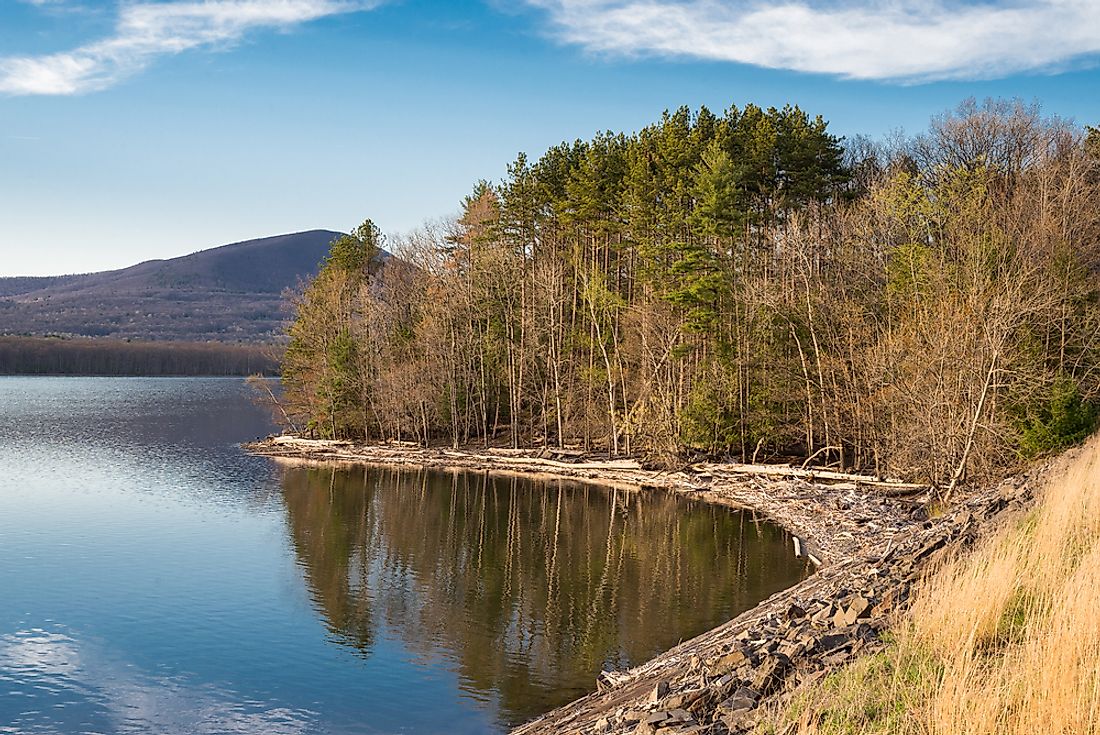Where Does New York City Get Its Water From?

With a population of over 8 million residents, New York City is the largest city in the United States. Its metropolitan area is among the largest in the world with a population of over 19 million. Because of the high population, the demand for resources such as water is equally high in New York City. The residents consume about one billion gallons of drinking water per day. Additionally, millions of gallons of water are also required for industrial processes. Despite the high demand for clean drinking water, the city has managed to develop one of the most extensive municipal water systems in the world. But where does the city get its water from?
The water that ends up in most taps across the city of New York makes the approximately 125-mile journey from upstate New York. The city’s water supply system is a complex system that relies mainly on a combination of reservoirs, aqueducts, and tunnels to meet daily demands. NYC has a simple water treatment process and supplies about 95% of the total water demand by gravity. The other 5% has to be pumped to increase pressure. The city has one of the largest, well-protected watersheds, extending for about 53,000 hectares.
About the Watersheds, Lakes, and Reservoirs
New York City has three major watersheds: the Croton (located north of the city), Catskill, and Delaware systems, both located west of the Hudson River. About 95% of the city’s water is obtained from the Delaware and Catskill systems and about 3% from the Croton system. From the watersheds, the water is fed into several reservoirs and controlled lakes, including the Pepacton Reservoir which has a capacity of about 140 billion gallons and the Ashokan with a capacity of over 120 billion gallons. At the reservoirs and lakes, water is checked for contaminants and clarity before the highest quality water is released. The watershed, lakes, and reservoirs are protected by over 200 police officers.
The Aqueducts and Water Treatment
The water from the lakes and reservoirs flow through a system of tunnels and aqueducts including the 92-mile Catskill Aqueduct which flows from Ashokan Reservoir to the city’s northern boundary. Another significantly long aqueduct is the 85-mile Delaware Aqueduct. These tunnels and aqueducts allow the water to flow downstate to the Kensico Reservoir. The reservoir balances the daily water demand in the city. At this point, the water is also disinfected and treated using fluoride at the largest ultraviolet treatment facility in the world. From the treatment facility, the water makes its way into the Hillview Reservoir in Yonkers where water undergoes additional treatment. The reservoir also elevates the water so that it can be propelled with enough force into people’s homes.
Water Distribution
From the Hillview Reservoir, water is distributed throughout the city using three main tunnels: Tunnel Number 1, 2, and 3. From the tunnels, the water is routed for distribution throughout the city. Buildings with less than six stories do not need pumps as gravity does all the work. However, pumps are required to move the water to floors above the 6th floor. To ensure that the water distributed is of high quality, the Department of Environmental Protection has about 1,000 sampling stations around the city where testing is done.











